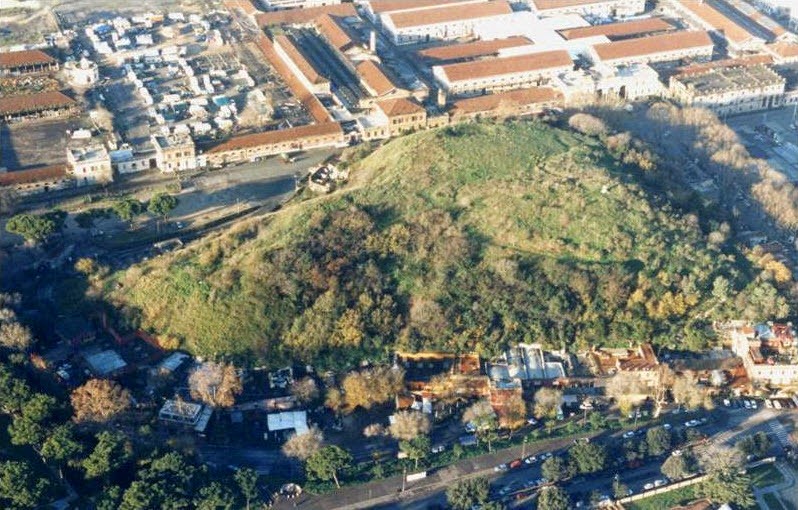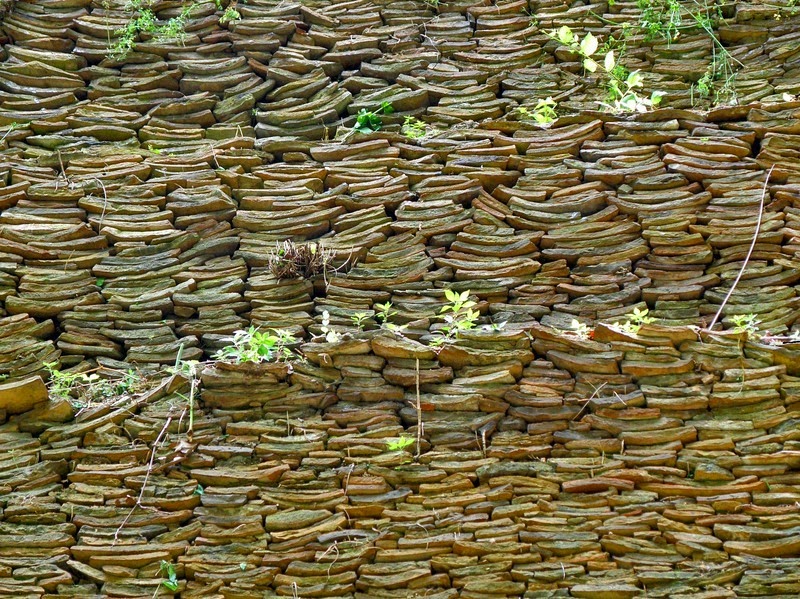
(Monte Testaccio, from amusing planet website)
The hill stands 115 feet high, covering an area of over five acres on the outskirts of Rome. Known as Monte Testaccio it received a brief mention in a prior THC post (see Belisarius Enters Rome). It is not a natural hill. Rather, it is a planned landfill, active for at least the second and third centuries AD, consisting of remnants of an estimated 53 million amphorae, primarily 18 gallon containers formerly containing olive oil imported from Baetica (southern Spain), Africa (Tunisia), and Libya. The amphorae could not be reused because residue of the oil permeated the containers making them sticky and smelly.
The scale of imports, through the imperial ports at Ostia, near where the Tiber River enters the Tyrrhenian Sea, was required to meet the ravenous needs of the one million inhabitants of the Imperial capital. Olive oil was so important a staple that the Empire established an official olive oil reserve near the banks of the Tiber and very close to Monte Testaccio.
The landfill was engineered, with fragments of the broken jars carefully place, as you will see in the pictures below. Some fragments are inscribed with the name of the importers, as well as with the names of the inspectors who weighed them.
The area was abandoned during the late Empire and remained deserted as the city of Rome shrank over the centuries. As late as the 19th century it was a pastoral area used for recreation.
(City and walls of Rome from Monte Testaccio, JMW Turner; early 19th century)

The pyramid in the wall, known as the Pyramid of Cestius was built by a prominent Roman, Gaius Cestius around 15 BC. It is possible Cestius may have been a member of the Roman expedition to Nubia, south of Egypt on the Nile, in 23BC, and inspired by the sharp pointed Nubian pyramids. At the time the tomb was built it was outside the old 4th century BC walls of Rome. When Aurelian ordered the construction of a new wall in the 272AD, the pyramid was incorporated into it as a defensive bastion.
Inside the hill:

Engineered walls:

Broken pieces of amphorae:

Flavio al Velavvodetto Restaurant at the base of the hill

No comments:
Post a Comment